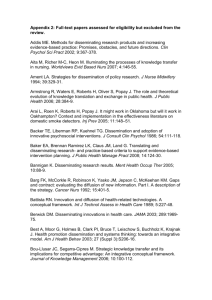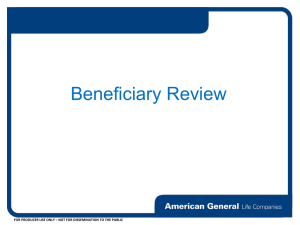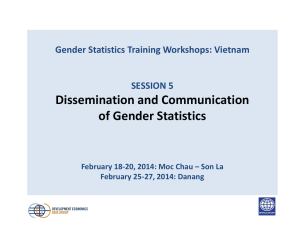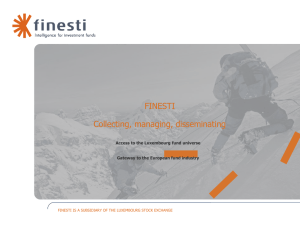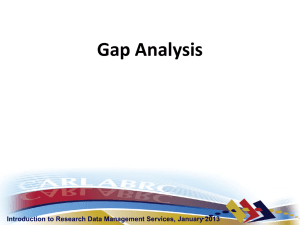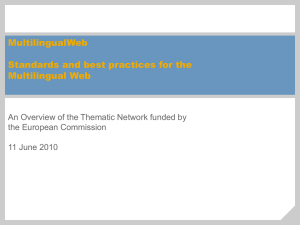Telling a Story: Turning Numbers Into Information and
advertisement
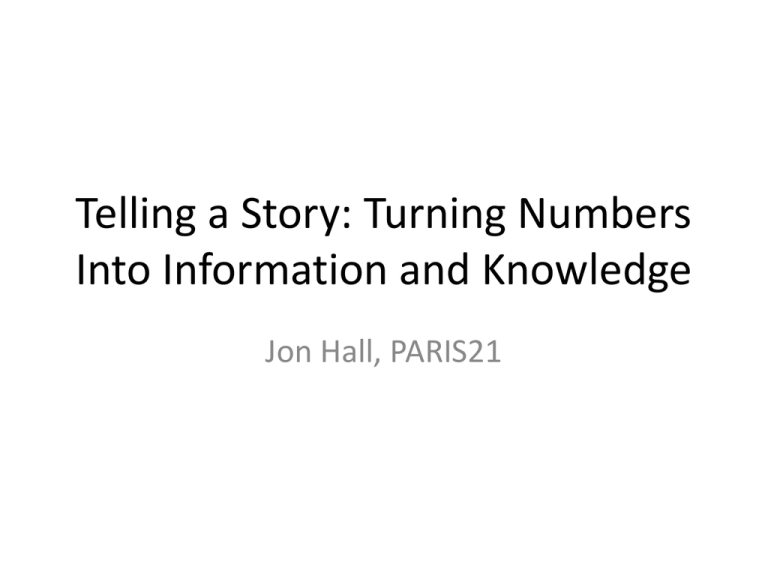
Telling a Story: Turning Numbers Into Information and Knowledge Jon Hall, PARIS21 NSOs: Data Disseminators or Knowledge Builders? People’s Knowledge of Official Measures of Economic Performance What U.S. Consumers Know About Economic Condition Richard Curtin Research Professor and Director Survey of Consumers - University of Michigan Statistics are worthless unless they are used! Statistics are often perceived as Boring Not relevant to people’s lives The last 2 cm is the most important PUBLIC DATA DISSEMINATION SCENARIO AUDIENCE Public, Policymakers, Students MEDIA Internet, CD, Books, TV, Newspapers, Presentations INTERPRETERS Journalists, Activists, Researchers, Teachers DATA Source: Gapminder National Statistical System BUT THIS IS NOT THE CASE...BECAUSE... AUDIENCE BORING MEDIA DIFFICULT INTERPRETERS EXPENSIVE DATA Source: Gapminder National Statistical System 5 112 5 7 9 744 5 7 9 112 8 347 779 6,3 8 135,4 9 56 2006=10 45 + 7 12% 7687 2 3477 8 779 6,3 8 135,4 9 45 56 2006=10 + 7 12% Tabulation Methods/calculations 7445 Statistics Data entry & editing Data Data collection/surveys/adm. registers (Master plan/strategy/MDGs/PRSPs, etc.) NSOs = Numerical Volcanoes? 10 User-friendly presentation Tabulation Methods/calculations Data entry & editing Data collection/surveys/adm. registers (Master plan/strategy/MDGs/PRSPs/etc.) 11 • Find the story • Tell the story • Spread the story 12 Find the interesting stories • Don’t be afraid to make statistics interesting – they are! • But how to find the interesting story? 13 Requires analysis… • In a complex society, readers need to be guided through the numerical jungle: “What do the numbers really mean”? • Informed users and the general public need explanations, interpretation and comment 14 Analysis also • Forces us to look closer at the data: concepts, definitions, measurements, sampling, etc. • … and provides feedback into the statistical production process, increasing the quality of statistics, by uncovering errors and mistakes 15 Analysis means … • Selecting among all the possible numbers What is… – Important? – Interesting? – New…? • Making the figures comparable • And comparing: pointing out differences, trends and tendencies – Over time – Between groups 16 Finding the Story • Pick an indicator and ask …. • What is the level and the rate of change for the nation? • How do different subgroups/regions etc differ? • What is driving the change? • How much change affect other aspects of life? • How does this compare with other countries? 17 Telling the Story • Short Simple Communication – Use Plain Language 18 General motto: KISS! • Keep It Short and Simple! • This applies to: – – – – Tables Graphs Titles Text 19 General motto: KISS! User-friendly presentation of statistics Guide to creating a dissemination strategy and dissemination guidelines for developing and transition countries On www.paris21.org 20 User-friendly? From: 2004 Census, Qatar 21 User-friendly? Literacy rate. Adult men and women Men Women 1935 30.8 8.0 1945 44.3 13.5 1950 47.7 16.7 1955 56.3 21.3 1960 54.8 21.1 1965 64.7 27.6 : : etc. From: Statistical Indicators 1923-2004, Turkstat 22 General motto: KISS! Men & Women not Males & Females People not Persons 23 General motto: KISS! A female born in 2010 has a life expectancy at birth of 77.3 years Or In 2010 a baby girl can expect to live to be more than 77. 24 Telling The Story • Use new ICT tools and other techniques 25 Telling The Story Ask 4 questions: • What do we have/use traditionally to present our statistical data? • Are all these options effectively helping us to reach our different audiences? • What are the new possibilities in this area? • Are they better suited for our targets and will they help improve communication on statistics? Gapmider Factbook on Gapminder 27 Fusion Charts You Tube Spreading the Story 30 Web 2.0 – Information Explosion • Search engines • Government and NGO websites • Communication tools – youtube for video, • Interactive documents • Discussion forums on data – Many eyes, swivel • Wikis • Mash-ups – E.g. google maps plus data on [war, water, mobility…] from 3G phones • Information and misinformation explosion The role of the media Traditional dissemination model Media The public Libraries NSI Education Government/org. Business 32 “New” dissemination model Media The public Libraries NSI Education Government/org. Business 33 The media are of vital importance because: • They represent an important channel of dissemination • They help increase the visibility and public recognition of the NSO – And can improve the publics trust in statistics 34 Statistician and journalist: Like cat and dog? 35 We must cooperate Journalists are our best friends … 36 Two basic rules when communicating with the media: • Equal treatment – No pre-release access • Establish a release calendar 37 In many NSOs dissemination is still limited, because: • Focus on data collection and processing • Lack of experience (and coordination) • ”Fear of dissemination”? • Lack of dissemination strategy and guidelines 38 “Statistics are people with the tears washed away” —Victor Sidel Jon.Hall@oecd.org
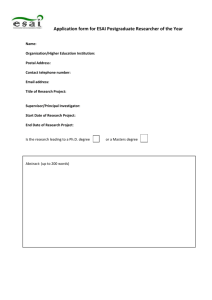
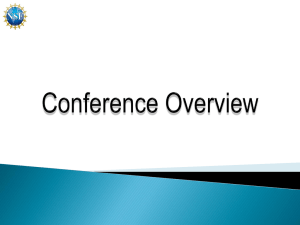
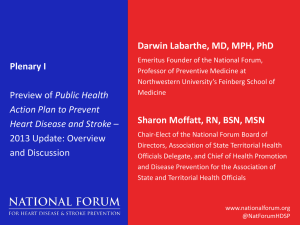

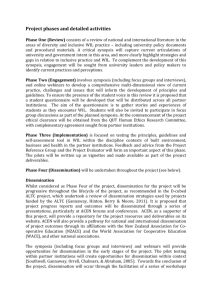

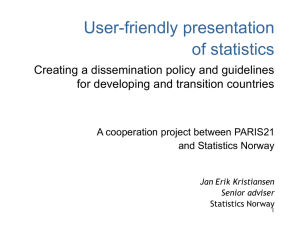
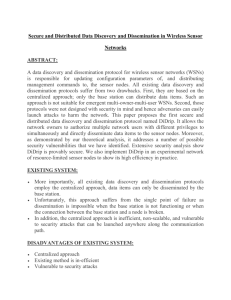
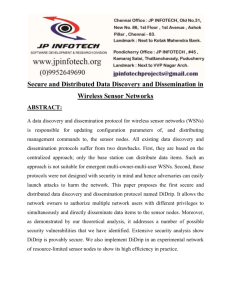
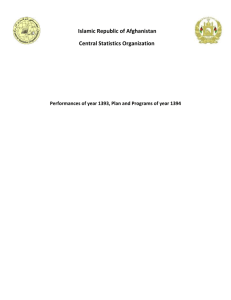
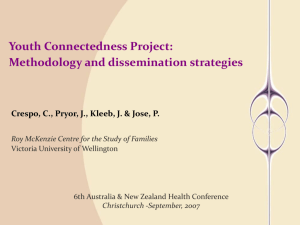
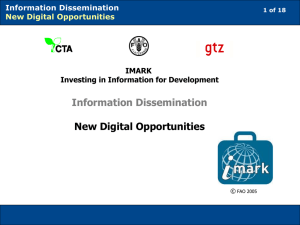
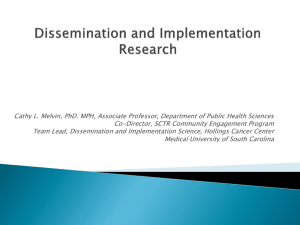
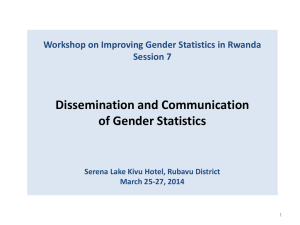
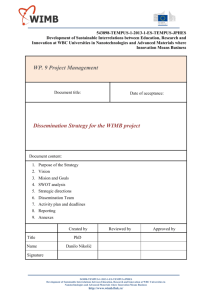
![Evidence based interventions (EBI)[1]-20111018](http://s2.studylib.net/store/data/005427921_1-e4102d7511bf468ef71a4cef5128c7b0-300x300.png)
